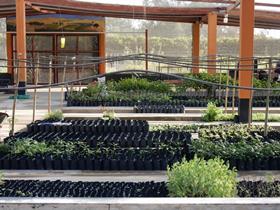
UK growers Barfoots has helped preserve ancient Peruvian plants and tree varieties endangered by climate change and modern agriculture in a major three-year project.
Teaming up with Sainsbury’s, Royal Botanic Gardens, Kew and the Peruvian government, Barfoots established a Native Plant Conservation Centre for preserving and cultivating indigenous flora, as well as restoring desert ecosystems in the Ica region of Peru.
Barfoots say the project has made “significant steps in restoring biodiversity, reducing water use, conserving agrobiodiversity and engaging the local community”.
The NPCC centre has collected and registered a bank of 5.6m seeds for rare native plants as well as reintroducing native species to farms and huertas (orchards) in the area, which provide nutritional and medicinal resources for local people and resources for pollinators such as bees.
Keston Williams, Barfoots UK technical director, was directly involved in planning and delivering the project alongside RBG Kew scientist Oliver Whaley.
Williams said: “Peru’s rapid and extensive agricultural expansion is set against the backdrop of fragile arid ecosystems in this unique desert environment. Protection of threatened and endemic biodiversity, the needs of the local community and managing agricultural production, remains challenging for farmers and exporters.'
He continued: “Agriculture exports are a significant source of revenue and employment for the people of Peru. Agriculture contributes 7.6 per cent of GDP, approximately $13.4bn to the Peruvian economy. The Ica region is referred to as the largest greenhouse in the world because the growing conditions are near perfect for many crops. The demands of modern agriculture have put tremendous pressure on this unique ecosystem and our project has started the process to alleviate this.”
Kew’s Oliver Whaley added: “Here in Peru, native plants have allowed ancient desert cultures to thrive, and today they still have immense potential to solve many of our problems. Unfortunately, almost 99% of the ancient forest has been cleared. 1,000 year old native trees like Huarango (Prosopis limensis) have been cut down for charcoal.
“However, where root stock remains we have started reintroducing young trees. We have been able to show how the ecosystem provides important ecosystem services to agriculture of pollination and biological control whist protecting against flash-floods and saving water”



